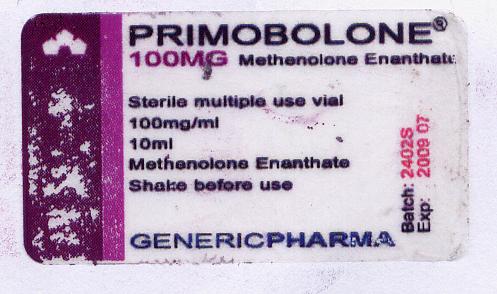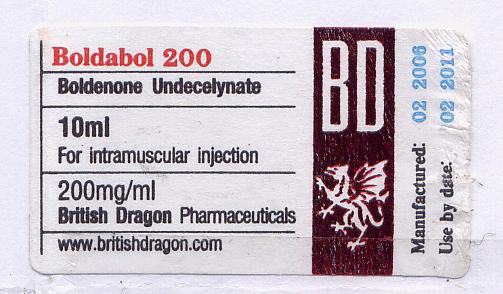Swedish Black Market Analyses
Again an old set of analyses, because I strongly believe that history keep repeating itself througout the years, That why I'll post sets of analyses to enable you to compare.
 There is no question about it. Underground steroid products make up the dominant share of the global steroid business now. What was once a market largely fed by real prescription drugs, is now one where small-scale underground manufacturing and home brewing operations thrive. The underground market does accomplish one very substantial thing – it allows the very large demand for these drugs to be met. It will be the first to admit, that were it not for the underground aspect of this trade, there would be far fewer drugs in commerce, and far fewer people with access to them. But this article is not about the availability of underground steroids. It is about their safety.
There is no question about it. Underground steroid products make up the dominant share of the global steroid business now. What was once a market largely fed by real prescription drugs, is now one where small-scale underground manufacturing and home brewing operations thrive. The underground market does accomplish one very substantial thing – it allows the very large demand for these drugs to be met. It will be the first to admit, that were it not for the underground aspect of this trade, there would be far fewer drugs in commerce, and far fewer people with access to them. But this article is not about the availability of underground steroids. It is about their safety.
 Underground steroids are indeed everywhere. But are they actually safe to use? Are underground steroids truly equivalent to the prescription drugs they are to replace? Those in support of the underground business often herald their favorite brands. Who is to blame them when they have access to a company that can supply them the variety, and often great value, that can be found with underground steroids. Many readers will recognize that we have had a very active testing history at Body of Science. In fact, I suspect that no single magazine or online community has tested as much as we have. But we too have our limitations. Up until now, our testing has been focused solely on the steroid content of a product. In other words, we have been able to tell you if X steroid was present in Y amount, but that is it.
Underground steroids are indeed everywhere. But are they actually safe to use? Are underground steroids truly equivalent to the prescription drugs they are to replace? Those in support of the underground business often herald their favorite brands. Who is to blame them when they have access to a company that can supply them the variety, and often great value, that can be found with underground steroids. Many readers will recognize that we have had a very active testing history at Body of Science. In fact, I suspect that no single magazine or online community has tested as much as we have. But we too have our limitations. Up until now, our testing has been focused solely on the steroid content of a product. In other words, we have been able to tell you if X steroid was present in Y amount, but that is it.
The Labs
 In an effort to help consumers REALLY assess the quality and potential health risks of underground steroid products, BodyofScience.com and ANABOLICS undertook a detailed joint drug analysis project. This project focused solely on examining the quality of steroids made from underground facilities, and exceeded the normal scope of testing by examining a number of other variables often overlooked in dosage testing. A total of 14 underground steroid samples were selected for laboratory testing, which included products from Amplio Labs, British Dragon, Diamond Pharma, Generic Anabolics, Generic Pharma, Lizard Laboratories, Medical Inc., Microbiological Labs, Nordic Supplements, Shark Laboratories, SWE Supplements, and Troy Labs. Included in this list were drugs that were made from small underground manufacturers, mid-level operations, and even producers large enough to have their items assembled under contract by drug manufacturing facilities. All 14 samples were analyzed at a registered and licensed facility in the U.S.
In an effort to help consumers REALLY assess the quality and potential health risks of underground steroid products, BodyofScience.com and ANABOLICS undertook a detailed joint drug analysis project. This project focused solely on examining the quality of steroids made from underground facilities, and exceeded the normal scope of testing by examining a number of other variables often overlooked in dosage testing. A total of 14 underground steroid samples were selected for laboratory testing, which included products from Amplio Labs, British Dragon, Diamond Pharma, Generic Anabolics, Generic Pharma, Lizard Laboratories, Medical Inc., Microbiological Labs, Nordic Supplements, Shark Laboratories, SWE Supplements, and Troy Labs. Included in this list were drugs that were made from small underground manufacturers, mid-level operations, and even producers large enough to have their items assembled under contract by drug manufacturing facilities. All 14 samples were analyzed at a registered and licensed facility in the U.S.
The Tests
There were four specific areas of testing for this market analysis project. The first test was to look for the presence of toxic heavy metals such metals as lead, tin, mercury, and arsenic. Next, we commissioned the standard steroid quantification testing to see how these products were dosed. After this we looked to see if there were any unknown steroidal contaminants in the products. Pharmaceutical grade steroids will be highly pure. Unprocessed intermediary chemicals or other contaminants should not appear upon analysis. The presence of unknown steroidal substances signifies that lower quality materials (not made to pharmaceutical standards) were used. Finally, we examined for the presence of the flavoring agent 2,4-decadienal. This material is common to food products, and its presence demonstrates that food-grade oil (not highly pure pharmaceutical grade oil for injection) was used during product manufacture.
presence of toxic heavy metals such metals as lead, tin, mercury, and arsenic. Next, we commissioned the standard steroid quantification testing to see how these products were dosed. After this we looked to see if there were any unknown steroidal contaminants in the products. Pharmaceutical grade steroids will be highly pure. Unprocessed intermediary chemicals or other contaminants should not appear upon analysis. The presence of unknown steroidal substances signifies that lower quality materials (not made to pharmaceutical standards) were used. Finally, we examined for the presence of the flavoring agent 2,4-decadienal. This material is common to food products, and its presence demonstrates that food-grade oil (not highly pure pharmaceutical grade oil for injection) was used during product manufacture.
The Results
A detailing of the first 2 results from this testing series is available below, for all readers to see. Overall, the products examined in this study reflected extremely poorly on the quality of the underground steroid market. To begin with, more than 20% of the products (1 in 5) contained heavy metal contamination. While pre-market testing would have noticed this, if such products were ever found on pharmacy shelves in the U.S. it would trigger an immediate nationwide recall. Next, an examination of basic drug dosing showed many deviations. Approximately 35% of the products were actually significantly overdosed. While this was likely done in an effort to produce a stronger user response and loyal customer base, this is unacceptable and does raise many potential safety issues.
Test #1: Heavy Metals Contamination
Sample Contamination Result
1. methandrostenolone None Detected (<0.002) PASS
2. testosterone enanthate None Detected (<0.002) PASS
3. testosterone enanthate None Detected (<0.002) PASS
4. testosterone propionate None Detected (<0.002) PASS
5. boldenone undecylenate Metals Found (>0.002) FAIL
6. testosterone cypionate None Detected (<0.002) PASS
7. boldenone undecylenate Metals Found (<0.002) FAIL
8. trenbolone hexahydro. None Detected (<0.002) PASS
9. testosterone cypionate None Detected (<0.002) PASS
10. methenolone enanthate Metals Found (>0.002) FAIL
11. testosterone cypionate None Detected (<0.002) PASS
12. nandrolone decanoate None Detected (<0.002) PASS
13. methenolone enanthate None Detected (<0.002) PASS
14. trenbolone enanthate None Detected (<0.002) PASS
Failure Rate: 21%
Test #2: Dosage vs. Label Claim (mg/mL)
Sample Labeled Dose / Actual Dose / Percentage of Claim / Pass Fail Status
1. methandrostenolone 25 mg 115 mg 459% FAIL
2. testosterone enanthate 250 mg 440 mg 176% FAIL
3. testosterone enanthate 250 mg 408 mg 163% FAIL
4. testosterone propionate 75 mg 127 mg 169% FAIL
5. boldenone undecylenate 200 mg 240 mg 120% PASS
6. testosterone cypionate 200 mg 204 mg 102% PASS
7. boldenone undecylenate 200 mg 178 mg 89% PASS
8. trenbolone hexahydro. 76 mg 190 mg 249% FAIL
9. testosterone cypionate 200 mg 177 mg 88% PASS
10. methenolone enanthate 100 mg 54 mg 54% FAIL
11. testosterone cypionate 250 mg 171 mg 69% FAIL
12. nandrolone decanoate 250 mg 228 mg 91% PASS
13. methenolone enanthate 100 mg 78 mg 78% FAIL
14. trenbolone enanthate 100 mg 0 mg 0% FAIL
Failure Rate: 64% (+/- >20% of Label Claim)
Conclusion
The results are fairly self-explanatory. Even with just these two sets of tests under our belt, serious problems are evident. The heavy metals, of course, are alarming. The metals tested here are all known to pose specific threats to health when they accumulate in the body. Those metals considered inert (such as iron and aluminum) were not included. Heavy metals are common in chemical-manufacturing operations, but are normally removed through very careful product assembly and purification steps. They were likely found here because the raw materials used to make some of these steroids was simply made “cheaply”, without the expense needed to hit true drug-grade purity. This type of material could be considered “food grade”, and likely dominates most of the underground market.
This article is certainly not meant to be an outright attack on underground products. Indeed, to many bodybuilders these products fill an important niche, which is very understandable. Indeed also, there are products to be found on the underground market that are made to high quality standards. In fact, these results should underline the other side of the coin, that it is possible for underground steroids to meet the level of true pharmaceutical grade drug purity. After all, some of these products did not have any unacceptable heavy metals, and were properly dosed. The very difficult trick, however, can be just finding them. Either way, I feel it is very important to be aware of the good and the bad of the underground anabolic/androgenic steroid market before you make any decisions. Stay informed. Stay safe.

- Login to post comments


